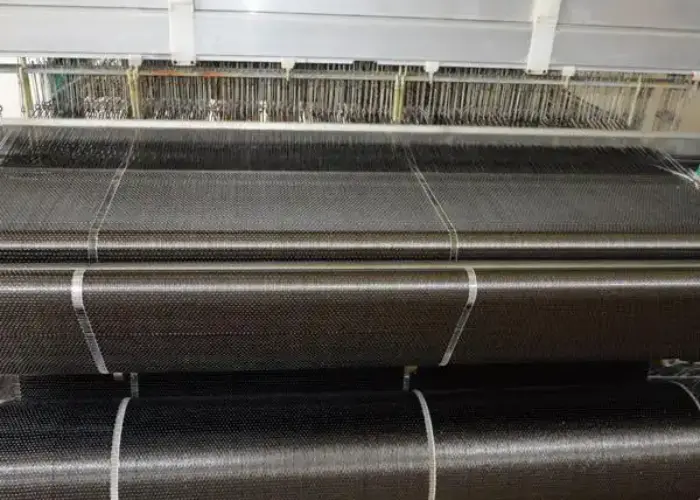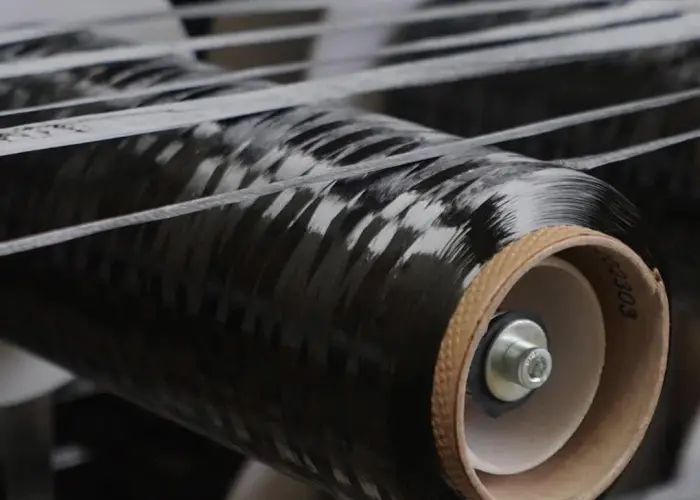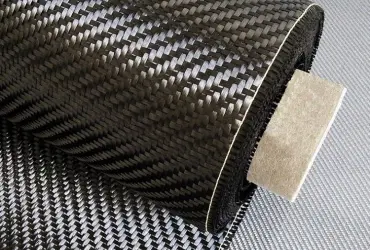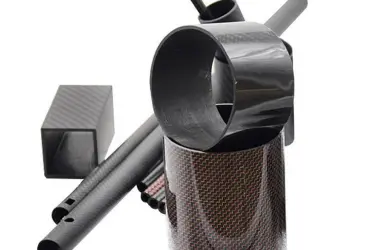Carbon Fiber Fabric Selection Guide — How to Choose Carbon Fiber Fabric ?
One‑Stop Quick‑Reference from Tow Size to Weave Structure
Version: 2025‑07‑25 | For Online Sizing & Engineer Quick‑Look
1. Selection Mind Map (3 Levels, 30 s)
Fiber Grade → Fabric Structure → Areal Weight & Width
Complete first‑pass screening in 30 s; finalize material code in 5 min.
2. Fiber Grade & Performance Overview
| Fiber Grade | Tow Size | Tensile Strength (MPa) | Modulus (GPa) | Typical Applications |
|---|---|---|---|---|
| T300 | 1K / 3K / 12K | 3,530 | 230 | Automotive exteriors, sports gear |
| T700 | 3K / 12K | 4,900 | 230 | UAV fuselages, structural reinforcements |
| T800 | 3K / 12K | 5,490 | 294 | Secondary aerospace parts, racing frames |
| M40J | 3K / 6K | 4,410 | 377 | Satellite panels, optical mounts |
• 1K: Ultra‑fine appearance—luxury products
• 3K: Balanced strength & cost—golden standard
• 12K: High layup efficiency for large‑area reinforcement
3. Fabric Weave Comparison
| Weave Structure | Weaving Pattern | Features | Ideal Applications |
|---|---|---|---|
| Plain Weave | 1:1 interlace | Stable, minimal fraying | Shell panels, phone backs |
| Twill Weave | 2×2 or 4×4 diagonal | Good drape, conforms to curves | Automotive interiors, custom hoods |
| Satin Weave | 4H/8H float | Excellent drape & gloss | Yachts, luxury interiors |
| UD Unidirectional | No interlace | Maximum 0° strength | Wing spars, bicycle frames |
| 3D Weave | Through‑thickness fibers | +30 % interlaminar shear | High‑impact protection parts |
4. Areal Weight & Fabric Width Lookup
| Areal Weight (g/m²) | Thickness (mm) | Fabric Width (mm) | Typical Use |
|---|---|---|---|
| 93 (1K Plain) | 0.10 | 1,000 | High‑end electronics covers |
| 200 (3K Plain) | 0.25 | 1,000 / 1,270 | UAV fuselages |
| 300 (3K Twill) | 0.30 | 1,270 / 1,500 | Automotive customization |
| 400 (12K Twill) | 0.35 | 1,500 / 2,000 | Wind turbine blades, marine hulls |
| 600 (UD) | 0.50 | 300 / 600 / 1,270 | Primary load‑bearing beams |
Custom areal weights (80–640 g/m²) and widths up to 2,500 mm available on request.

5. Resin Compatibility Table
| Resin Type | Recommended Cure Temp | Compatible Process | Notes |
|---|---|---|---|
| Epoxy 120 °C | 80–120 °C | Autoclave, compression molding | General‑purpose |
| Epoxy RTM | 25–80 °C | RTM, vacuum infusion | Large‑format panels |
| Vinyl Ester | 25–120 °C | Hand lay‑up, vacuum bag | Chemical resistance |
| Prepreg | 120–150 °C | Autoclave | Highest performance |
6. Surface Finish Options
| Surface Finish | Process | Features | Additional Cost |
|---|---|---|---|
| 3K Twill Glossy | Autoclave + polish | Mirror‑like, pronounced weave | + 8 % |
| 3K Twill Matte | Autoclave + matting agent | Anti‑fingerprint, low glare | Base price |
| UD Matte Black | Compression mold | No visible weave, ultra‑light | – 5 % |
| Color Silk‑Screen | Digital print | Logos & scales | + 10 % |
7. Quick Selection Example (3 Steps)
Scenario: UAV top shell—complex curves, lightweight priority
- Fiber & Tow: T700 3K
- Weave Structure: 2×2 Twill
- Areal Weight & Width: 200 g/m² @ 1,270 mm
→ Result: 35 % weight reduction, wrinkle‑free drape on curves.
8. Tolerance & Roll Information
| Item | Standard Tolerance | Roll Length | Core Diameter |
|---|---|---|---|
| Areal Weight | ± 3 % | 50 / 100 m | 76 mm |
| Width | ± 2 mm | Custom up to 300 m | 152 mm |
9. Online Tool & Delivery
- 3‑Step Fabric Selector: Input fiber → weave → weight, get results in 30 s
- Within 24 h: A4 sample & quote
- Lead Times: Small runs in 3 days; large batches in 7–10 days
- Additional Services: Laser slit, prepreg slitting, adhesive backing lamination
10. Common Pitfalls
- Pitfall 1: Focusing solely on areal weight → plain weave is stiff but hard to conform.
- Pitfall 2: Assuming 12K is always cheaper → high tow density can raise cost.
- Pitfall 3: Using UD without 90° backup → lacks transverse strength; add 90° plies.
By choosing the right fiber grade, weave structure, and areal weight, every carbon fiber fabric match ensures precise load compatibility.
Access our online fabric selector now to lock in your custom solution in 30 seconds!





